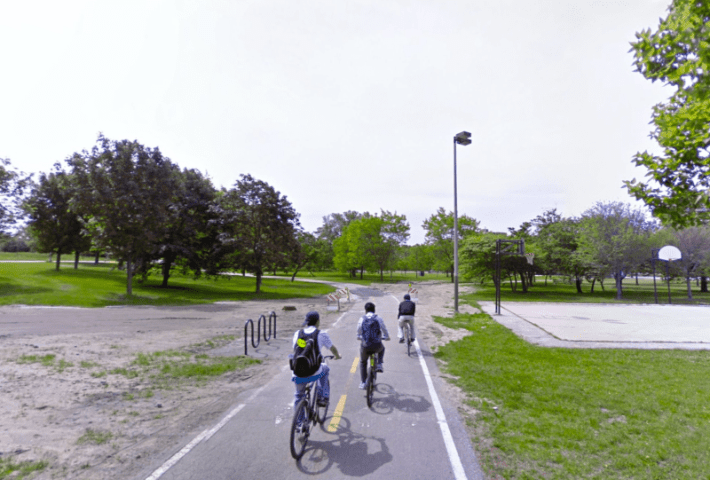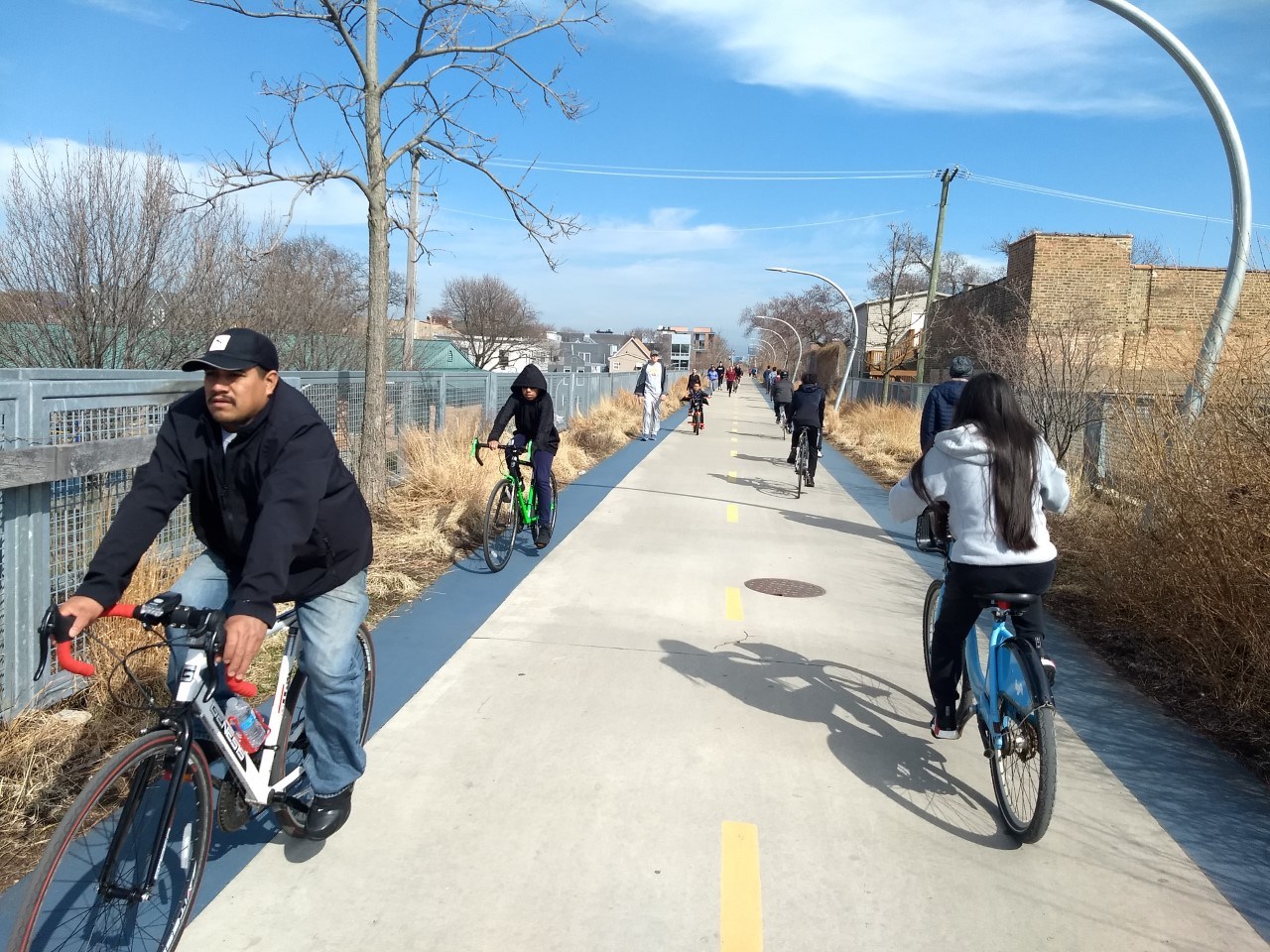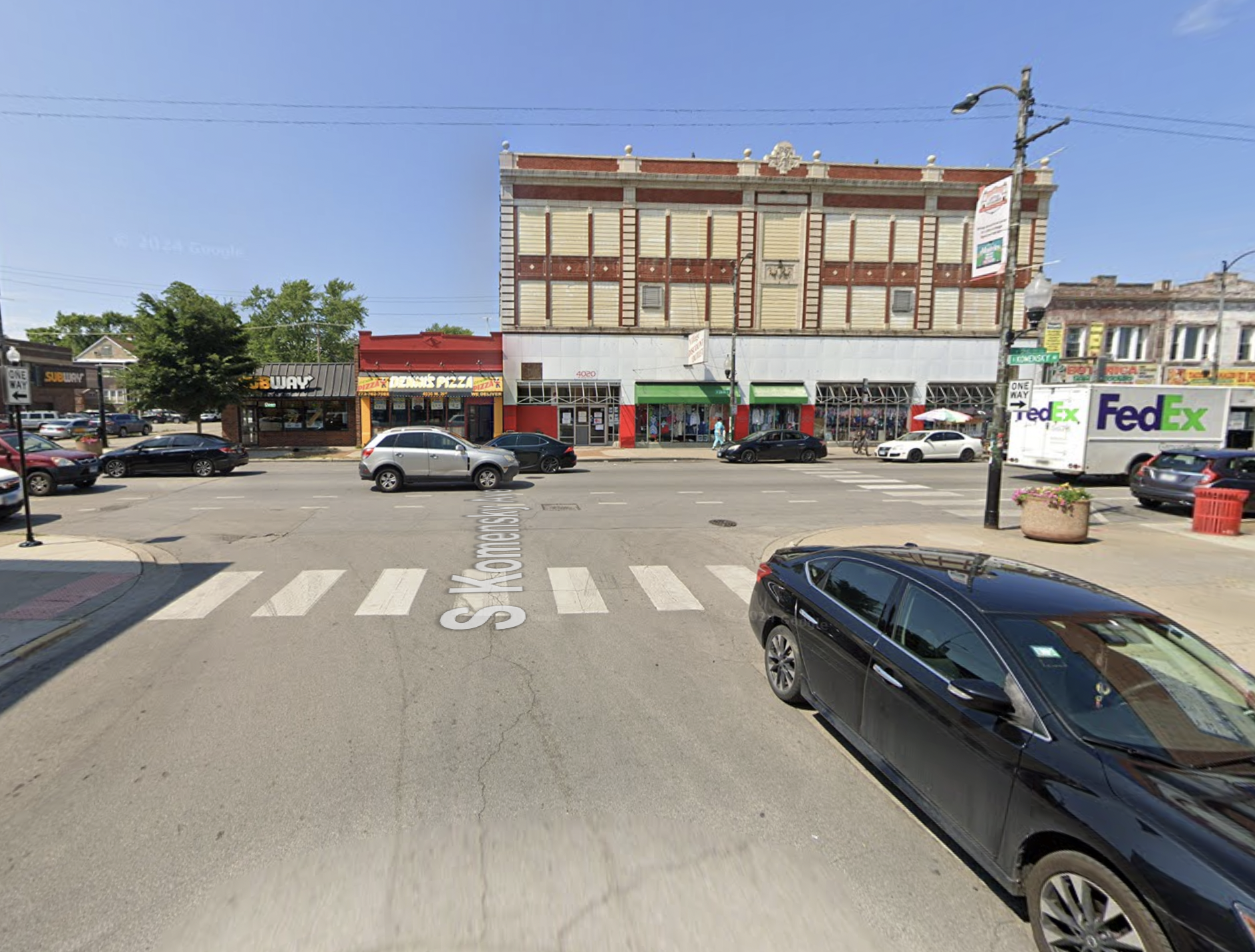Four days before Governor J.B. Pritzker announced Illinois' "Stay at Home" order, Streetsblog Chicago advocated for just such a policy. We noted that closing non-essential businesses and requiring residents to avoid leaving their houses except for critical tasks like getting food and supplies, would help the "flatten the curve," slowing the spread of the coronavirus so that our healthcare system doesn't get overwhelmed, which could prevent many needless deaths.
When Pritzker and Chicago mayor Lori Lightfoot announced the order, we hailed it as good news for public health, while acknowledging the financial hardship that the closures would cause for for many Chicagoans, and the need for a bailout for struggling workers. It was especially good to see that the Stay at Home edict defines "walking, hiking, running, or biking" and other forms of outdoor recreation as "essential activities," and specifies that "individuals may go to public parks and open outdoor recreation areas."
During this crisis, it's crucial to practice "social distancing" by not gathering with non-household members and keeping a 6'-plus distance from others in public space to prevent viral transmission. But Illinois' Stay at Home order recognizes that fresh air and physical activity are key for maintaining physical and mental health during these trying times. San Francisco's "Shelter in Place" edict explained why that's the case: "Spending time outside improves mood and wellbeing, and is particularly beneficial to children. Go for walks, go to the park, and engage in other similar activities."
So it was disappointing when Mayor Lightfoot announced today that all lakefront parks, the Lakefront Trail, The 606 elevated greenway, and the Chicago Riverwalk will be indefinitely closed as a safety measure during Stay at Home. Lightfoot said that police would be issuing warning and tickets to people who ignore the closures, making arrests if deemed necessary.
On the one hand it's understandable that the mayor felt that drastic measures needed to be taken. During yesterday's sunny and warm weather, many people were breaking social distancing rules on the lakeshore and trails by congregating in large groups, playing team sports, and letting their children use playground equipment, which are all activities that can spread COVID-19.
Likely some of these people were unfamiliar with the guidelines, which means more outreach is needed. Others may have mistakenly believed that the virus, which is most dangerous for elderly and vulnerable people, can't also do serious harm to younger people, and selfishly chose to ignore the rules.
Posting signs about the Stay at Home guidelines would help. Playgrounds and other facilities that are unsafe to use during the pandemic should be fenced off. And it would make sense to have city workers stationed in parks and on trails to do outreach about the rules, disperse crowds, and break up soccer, basketball, and softball games. And Streetsblog Chicago has previously noted that during Stay at Home, residents should steer clear of trails, parks, and beaches if they're too crowded for safe social distancing, perhaps avoiding them altogether during typical peak use times.

But completely banning use of the paths and parks is too extreme a solution, and one that may well do more harm than good for public health. "Park and trail closures have the potential to disproportionately harm communities of color, where residents already have few options to safely go for a walk or ride a bike under social-distancing guidelines," the Active Transportation Alliance noted in a blog post today. "City leaders must maintain access to spaces where people of color and other marginalized communities can spend time outdoors." They also argued that fining and arresting people who aren't following the Stay at Home rules would only cause more hardship in struggling neighborhoods.
Yesterday Streetsblog's Courtney Cobbs noted that, rather than reducing opportunities for walking and biking, the city should be temporarily opening up streets for car-free recreation, which would provide more space for social distancing. She pointed out that streets and expressways are largely empty of cars nowadays, so doing so would have little impact on traffic.
The local website Bike Lane Uprising, which documents bikeway obstructions, also spoke out in favor of this idea. "Social distancing is highlighting the limited amount of space allocated to people... [and the] incredible amount of space allocated to automobiles."
Some might argue that this is a frivolous notion when Chicagoans have bigger problems to worry about than where people will walk, jog, and bike. But it's not just sustainable transportation advocates who are pushing for such measures. In a recent New York Times op-ed, Dr. Ezekiel Emanuel, brother of ex-mayor Rahm Emanuel, called on Donald Trump to "order mayors to close most streets to vehicular traffic to make them pedestrian spaces, open enough for Americans to be outside at a safe distance."
New York City, where the pandemic threat is currently much more dire than in Chicago, is doing just that. Mayor Bill de Blasio recently announced that the city will be pedestrianizing ten streets, two in each borough, to create more open space during the pandemic. (Local transportation advocates say that's not nearly enough.)
And a successful petition drive led to the pedestrianization of Philadelphia's Martin Luther King Drive days later as a social distancing strategy. "We recognize that physical activity is important to wellbeing, and under current restrictions, are providing opportunities for park and trail use,” the city of Philadelphia said in a statement."
So while there are logistical challenges that must be overcome to do such open streets plans, and the needs of people with mobility challenges, first responders, delivery personnel, etc. must be accommodated, this is not rocket science. Yesterday I floated a possible citywide network of car-free streets paralleling Chicago's largely empty expressways. While that might be unrealistic, it would certainly make sense to pilot this strategy on a handful of roadways.
So while it's vital to enforce social distancing to slow the spread of COVID-19, and more safety measures in parks and trails were definitely warranted, Lightfoot's total closure of these facilities was a case of throwing out the baby with the bathwater. And if the closures are going remain in effect, the mayor should at least follow New York and Philly's leads by creating more space for safe, socially-distanced recreation elsewhere.
Here are some tips on preventing the spread of coronavirus, and advice for Chicagoans on what to do if you think you may have been exposed to the virus.






